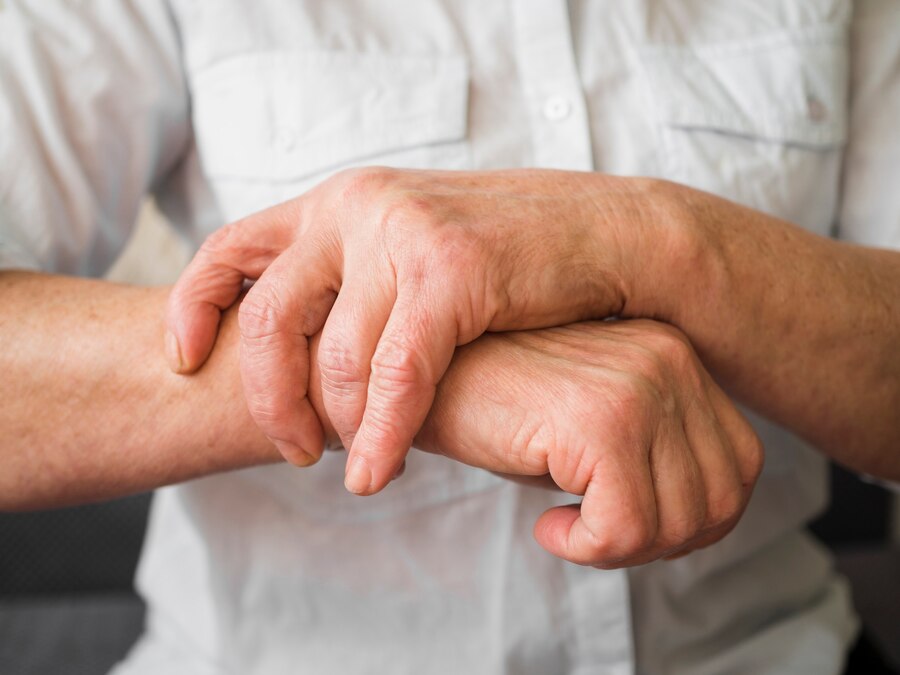If you're dealing with a sports injury and want to avoid invasive treatments, there are effective strategies you can implement right here in Gresham. Start by prioritizing rest and hydration, as these are essential for recovery. You'll also find that ice therapy and compression can greatly reduce swelling. But that's just the beginning—there are additional techniques to think about that could enhance your healing process. Curious about what these methods entail and how they can specifically benefit you?
Rest and Recovery
When it comes to healing from a sports injury, prioritizing rest and recovery is essential. You need to give your body the time it requires to heal properly. Ignoring this vital step can lead to prolonged pain and complications, so listen to your body. If you're feeling fatigued or in pain, it's okay to take a break.
Establish a recovery routine that includes plenty of sleep and downtime. Sleep is your body's natural repair mechanism, so aim for at least seven to nine hours each night. During the day, incorporate short naps if you feel tired.
You should also consider modifying your daily activities. Avoid any movements or exercises that aggravate your injury. Instead, focus on gentle stretches and movements that promote blood circulation without putting stress on the injured area.
Stay hydrated by drinking plenty of water. Proper hydration supports your body's recovery processes and helps flush out toxins.
Additionally, pay attention to your nutrition. Eating a balanced diet rich in vitamins, minerals, and proteins can greatly enhance your recovery. Foods like lean meats, fruits, vegetables, and whole grains should be staples in your meals.
Lastly, don't hesitate to consult a healthcare professional if you're unsure about your recovery. They can provide guidance tailored to your specific injury and needs.
Ice Therapy
To effectively manage pain and swelling after a sports injury, ice therapy can be an invaluable tool. Applying ice to the injured area helps constrict blood vessels, which reduces inflammation and numbs the pain. You should start ice therapy as soon as possible after your injury for the best results.
To use ice therapy effectively, wrap ice in a cloth or use a commercial ice pack. Avoid placing ice directly on your skin to prevent frostbite. Aim to apply the ice for about 15 to 20 minutes at a time. You can repeat this every hour, especially within the first 48 hours after the injury.
Keep in mind that consistency is key; regular applications can lead to better outcomes. Pay attention to how your body responds. If you notice any increased pain or discomfort, remove the ice immediately.
It's also important to give your skin a break between applications to avoid overexposure to cold. You can alternate between ice therapy and rest to maximize recovery.
In addition to managing swelling and pain, ice therapy can also help you regain mobility. As the swelling decreases, you might find it easier to move the injured area. However, always listen to your body.
If you experience significant pain while trying to move, it's best to consult a healthcare professional. Remember, ice therapy is just one part of your recovery process, so keep up with all recommended treatments for a swift return to your activity.
Compression Techniques
Following an injury, compression techniques can play an essential role in reducing swelling and providing support to the affected area. When you apply compression, it helps to limit the accumulation of fluid, which can often occur after an injury. This not only alleviates swelling but also provides a sense of stability, making it easier for you to move without further aggravating the injury.
You can use various methods for compression, but one of the most popular is an elastic bandage or wrap. Make sure to wrap the bandage snugly around the injured area, but not so tightly that it restricts blood flow. You should check your skin regularly for signs of excessive tightness, like numbness or increased pain. If you notice any of these symptoms, loosen the bandage immediately.
Another effective method is using a compression sleeve or sock, which is particularly helpful for joint injuries. These garments are designed to apply consistent pressure, improving circulation and aiding in recovery.
If you're dealing with a more severe injury, consider using a specialized compression device, which can provide adjustable pressure and is often used in physical therapy settings.
Remember to combine compression with other methods, like ice therapy, to maximize the benefits. This multifaceted approach can enhance your recovery and help you return to your favorite activities sooner.
Always consult with a healthcare professional to determine the best compression technique for your specific injury.
Elevation Strategies
Elevating an injured area can greatly reduce swelling and promote faster healing. When you elevate the injured limb above heart level, gravity helps decrease fluid accumulation, which can minimize pain and speed up recovery. It's important to start this process as soon as possible after the injury occurs.
To effectively elevate your injury, find a comfortable position where you can prop up the affected area. Use pillows, cushions, or any stable surface to support it. Make sure that the elevation is consistent, especially during the first 48 hours post-injury. Try to keep the injured area elevated for 20-30 minutes every hour while you're awake.
If you're dealing with a leg or foot injury, sit or lie down with your leg propped up on pillows. For arm injuries, resting your arm on a cushion or using a sling can help maintain elevation. Remember to adjust your position frequently to avoid stiffness in surrounding muscles.
While elevating your injury, it's vital to monitor how it feels. If you notice increased pain, numbness, or tingling, adjust the elevation to improve comfort.
Also, keep in mind that elevation works best in combination with other non-invasive treatments, such as ice and compression, to maximize your recovery.
Physical Therapy
When you face a sports injury, personalized treatment plans in physical therapy can make a significant difference.
These plans often include targeted strengthening and flexibility exercises tailored to your specific needs.
Personalized Treatment Plans
Many athletes find that personalized treatment plans in physical therapy are essential for effective recovery from sports injuries. These plans are tailored specifically to your unique condition, goals, and physical capabilities, making them more efficient than generic approaches.
When you meet with your physical therapist, they'll conduct a thorough evaluation to identify your injury's specifics and how it affects your performance. Using this information, your therapist will design a program that addresses your individual needs. This could include targeted exercises, manual therapy techniques, and modalities like ultrasound or electrical stimulation.
By focusing on your unique situation, personalized treatment plans help you recover faster and reduce the risk of re-injury. Moreover, these plans allow you to set realistic goals and track your progress over time. Your therapist will continuously reassess your condition and make adjustments to your treatment as needed, ensuring that you're always on the right path.
Strengthening and Flexibility Exercises
Strengthening and flexibility exercises are essential components of physical therapy that can enhance your recovery from sports injuries.
These exercises not only help alleviate pain but also promote healing by improving blood flow and reducing stiffness. Incorporating a variety of movements tailored to your specific injury can greatly increase your strength and range of motion.
Start with flexibility exercises, which focus on stretching the affected muscles. Gentle stretches can help maintain joint mobility and prevent further injury. Aim for dynamic stretches before activities and static stretches post-workout to guarantee ideal results.
Next, incorporate strengthening exercises. Focus on low-impact activities that gradually build muscle strength without overexerting yourself. Resistance bands, light weights, or body-weight exercises can be effective. Aim for two to three sessions per week, allowing adequate rest between workouts.
Always listen to your body. If you experience pain, modify your exercises or consult with a physical therapist. They can provide personalized guidance to make sure you're on the right track.
Active Release Techniques
Active Release Techniques (ART) provide an effective way to address soft tissue injuries and enhance athletic performance. If you're dealing with pain or tightness in your muscles, ART can greatly relieve your discomfort. This hands-on therapy targets specific areas of soft tissue, breaking down scar tissue and adhesions that might be hindering your movement.
During an ART session, a trained practitioner will evaluate your biomechanics and identify areas of restriction. They'll use a combination of precise pressure and movement to release tension in the affected muscles, tendons, and ligaments. You might feel some discomfort during the process, but that's often a sign that the treatment is working. Many athletes report improved range of motion and reduced pain following their sessions.
One of the main advantages of ART is its versatility. Whether you're an amateur athlete or a seasoned pro, it can be tailored to your specific needs. From runners to weightlifters, everyone can benefit from the enhanced recovery and injury prevention ART offers.
It's particularly effective for conditions like tennis elbow, shoulder injuries, and plantar fasciitis.
To get the most out of ART, consider incorporating it into your routine as a preventative measure, not just a reactive one. Regular sessions can help maintain ideal muscle function, keeping you in peak condition and ready for your next challenge.
Nutritional Support
When you're dealing with a sports injury, what you eat can markedly impact your recovery.
Incorporating anti-inflammatory foods into your diet can help reduce swelling and pain, while staying hydrated is essential for ideal healing.
Let's explore how these nutritional choices can support your recovery journey.
Anti-Inflammatory Foods
Incorporating anti-inflammatory foods into your diet can be a game-changer for sports injury recovery. These foods help reduce inflammation and promote healing, allowing you to get back to your favorite activities faster.
Here are some key anti-inflammatory foods to take into account:
- Berries: Packed with antioxidants, berries like blueberries and strawberries can help fight inflammation and reduce muscle soreness.
- Fatty Fish: Salmon, mackerel, and sardines are rich in omega-3 fatty acids, which are essential for reducing inflammation and supporting joint health.
- Leafy Greens: Vegetables like spinach and kale contain vitamins and minerals that boost your immune system and combat inflammation.
- Nuts and Seeds: Almonds, walnuts, and flaxseeds are great sources of healthy fats and antioxidants, providing a powerful anti-inflammatory punch.
Hydration Importance
Staying hydrated is essential for ideal recovery from sports injuries. When you're properly hydrated, your body can better transport nutrients to the injured area, promoting healing and reducing recovery time.
Water plays a vital role in maintaining joint lubrication and muscle function, which can prevent further injury.
You mightn't realize it, but even slight dehydration can impair your performance and prolong your recovery. Aim to drink water consistently throughout the day, especially before, during, and after exercise.
If you're engaging in intense workouts or outdoor activities, consider adding electrolyte-rich drinks to replenish lost minerals.
Pay attention to your body's signals. Thirst is a clear indicator, but also monitor the color of your urine. A pale yellow color typically signifies good hydration, while darker urine can indicate a need for more fluids.
Incorporating hydrating foods like fruits and vegetables into your diet can also help. Foods like watermelon, cucumbers, and oranges are great options.
Conclusion
In Gresham, following these seven tips can greatly enhance your recovery from sports injuries. By prioritizing rest, using ice therapy, applying compression, and elevating the injured area, you'll reduce swelling and promote healing. Don't forget the benefits of physical therapy and Active Release Techniques, along with incorporating anti-inflammatory foods into your diet. Keep a close eye on your body's response throughout the process, and you'll be back in the game stronger and faster.



